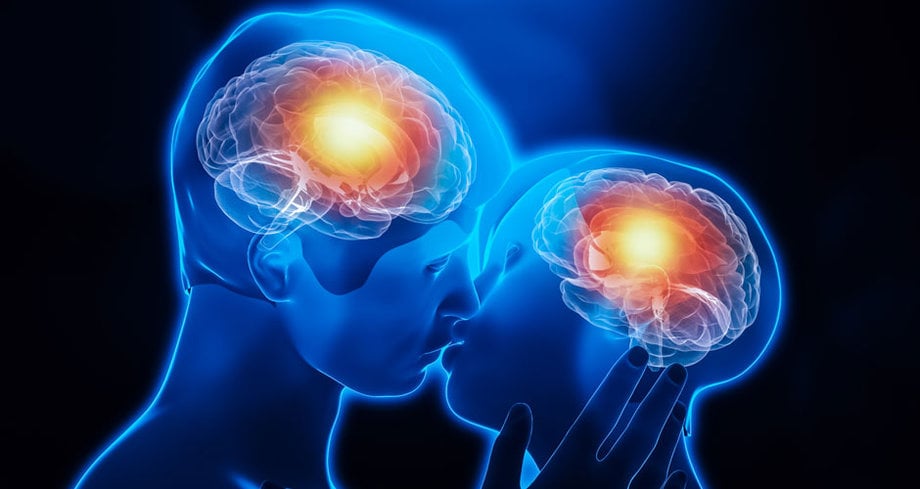What Is The Role Of Chemistry In Attraction?

Do you ever wonder why you feel that instant connection with someone? It’s all about the chemistry. Chemistry plays a crucial role in attraction, from those initial sparks to long-term relationships.
In this article, we will explore the fascinating world of chemistry and its impact on attraction.
Hormones and neurotransmitters are the driving forces behind those butterflies in your stomach. They create the intense feelings of attraction and desire. But it’s not just about the biochemical reactions in your body.
Physical attraction also plays a significant role. The way someone looks, moves, and even smells can trigger a powerful response in you.
But it’s not all about appearances. Shared values and interests also contribute to the chemistry between two people. When you connect on a deeper level, the attraction becomes even stronger. Nonverbal communication, such as body language and eye contact, can also heighten the chemistry between two individuals.
So, whether you’re in the early stages of a relationship or exploring the science behind love and attraction, understanding the role of chemistry is essential. Get ready to dive into the fascinating world of chemistry and its influence on attraction.
Key Takeaways
- Chemistry is crucial for maintaining attraction in long-term relationships.
- Chemistry goes beyond physical appearance and seeks emotional connection.
- Hormones like oxytocin and dopamine create pleasure and attachment in attraction.
- Understanding the science of love helps build deeper connections with partners.
The Chemistry of Attraction: An Overview
Do you ever wonder how chemistry plays a role in attracting someone you’re interested in? Well, it turns out that there’s more to attraction than meets the eye.
One important aspect of chemistry in attraction is the role of scent. Have you ever noticed how certain smells can make you feel instantly attracted to someone? That’s because our sense of smell is closely linked to our emotions and memories. Certain scents can trigger a positive response in our brain, making us feel more drawn to someone.
Another factor that plays a role in attraction is the impact of pheromones. These chemical signals, which are released by our bodies, can unconsciously influence how others perceive us. So, while looks and personality are important, the chemistry of attraction goes beyond that.
Now, let’s dive into the role of hormones and neurotransmitters in attraction.
The Role of Hormones and Neurotransmitters
When it comes to the science of attraction, understanding the impact hormones and neurotransmitters have on your brain can shed light on the intricate processes that contribute to your feelings of connection and desire.
- Pheromones play a crucial role in attraction, as they’re chemical signals that can communicate information about an individual’s genetic compatibility and reproductive fitness.
- Dopamine, a neurotransmitter often associated with pleasure, plays a key role in the brain’s reward system and is released during moments of attraction and infatuation.
- The role of pheromones in attraction is believed to be subconscious, with individuals being naturally attracted to certain scents without even realizing it.
- Dopamine helps create a sense of euphoria and excitement when you’re attracted to someone, which can reinforce the desire to pursue a romantic relationship.
- Understanding the role of hormones and neurotransmitters in attraction can help explain why certain individuals seem irresistibly appealing to us.
This understanding sets the stage for exploring the importance of physical attraction in the next section.
The Importance of Physical Attraction
You can’t deny the power of physical appearance in sparking a connection. When it comes to attraction, there are several psychological factors at play. Our brains are wired to find certain physical traits appealing, such as symmetry, facial features, and body proportions. These factors can evoke a sense of pleasure and excitement, which contribute to the initial attraction between two individuals.
Additionally, cultural influences also play a role in shaping our perceptions of physical attractiveness. Different cultures have different standards of beauty, and these standards can influence our preferences. However, while physical attraction is important, it’s not the sole determinant of a successful relationship.
Shared values and interests are crucial in forming a deeper connection. This transition into the next section highlights the importance of looking beyond physical appearance and exploring the compatibility of shared values and interests.
Explore the connection and depth of your relationship by discovering shared values and interests. Chemistry may initially attract two people, but it’s the presence of shared values and mutual interests that can truly solidify a strong bond. When you find someone who shares your core beliefs and passions, it creates a sense of harmony and understanding.
Sharing values such as honesty, trust, and respect can help build a solid foundation for a lasting relationship. Additionally, having mutual interests allows you to spend quality time together, engage in meaningful conversations, and create lasting memories.
As you delve into the world of shared values and interests, you’ll discover new layers of compatibility and learn more about each other. This understanding sets the stage for the power of nonverbal communication, which we’ll explore in the next section.
The Power of Nonverbal Communication
When it comes to nonverbal communication, body language, eye contact, touch, and proximity play a powerful role. Your body language can convey your interest and attraction, showing that you’re open and engaged.
Eye contact can create a deep connection and establish trust, while touch and proximity can ignite feelings of intimacy and closeness.
So pay attention to these nonverbal cues, as they can speak louder than words in the language of attraction.
Body Language
Body language plays a significant role in the chemistry of attraction, as it visually communicates interest and attraction between individuals. Nonverbal cues, such as facial expressions, can convey a person’s feelings and emotions without the need for words.
When someone is attracted to another person, their body language often reflects this. They may lean in closer, maintain eye contact, and exhibit open and relaxed postures. These nonverbal signals can create a sense of connection and intimacy between two people, fostering a deeper attraction.
Speaking of eye contact, it’s another powerful form of nonverbal communication that can intensify the chemistry of attraction. By locking eyes with someone, you can create a moment of shared vulnerability and establish a strong emotional connection.
Eye Contact
Eye contact can be a powerful tool in creating an instant and profound connection between two people. When you lock eyes with someone, it sends a signal that you’re interested and engaged in the interaction. It’s one of the most effective flirting techniques as it allows you to communicate without saying a word.
However, the importance and interpretation of eye contact can vary across different cultures. In some cultures, prolonged eye contact may be seen as a sign of aggression or disrespect, while in others it’s considered a positive gesture. Cultural influences play a significant role in determining the meaning and impact of eye contact in attraction.
As we move on to the next topic of touch and proximity, remember that eye contact sets the foundation for building a connection.
Touch and Proximity
As two people get closer and touch each other’s skin, a wave of warmth and electricity passes through their bodies, creating an intimate connection. Physical touch plays a crucial role in attraction and can communicate a range of emotions and desires. It can convey comfort, desire, and affection, and intensify the chemistry between two individuals.
Personal space also comes into play, as the level of comfort with physical proximity varies from person to person. Some individuals may enjoy close physical contact, while others may prefer maintaining a certain distance.
- Physical touch allows for the release of oxytocin, a hormone associated with bonding.
- Touch can increase feelings of trust and security.
- It can enhance the emotional connection between two people.
- The type of touch can convey different messages, from a friendly pat on the back to a more intimate caress.
- Personal boundaries and comfort levels with touch can vary greatly.
With touch and proximity being important aspects of attraction, they lay the foundation for exploring compatibility and chemistry in relationships.
Compatibility and Chemistry
When it comes to attraction, chemistry is like the secret ingredient that determines if two people are compatible. It goes beyond physical touch and proximity. Chemistry is about compatibility assessment and nurturing an emotional connection.
It’s that intangible feeling you get when you meet someone and everything just clicks. You feel at ease with them, you understand each other, and there’s a spark that ignites between you. Chemistry is what keeps the relationship alive and thriving. It’s the foundation that allows you to build a solid connection with your partner.
But chemistry doesn’t stop there. It plays a crucial role in long-term relationships as well. It helps to deepen the bond between two people and keeps the love and passion alive. Chemistry is the glue that holds everything together, making the relationship stronger with each passing day.
The Role of Chemistry in Long-Term Relationships
In a long-term relationship, chemistry plays a crucial role in maintaining attraction between partners. It’s important to keep the spark alive by regularly engaging in activities that bring you both joy and excitement.
Additionally, nurturing the emotional connection is vital for a healthy and fulfilling partnership. This can be achieved through open communication, empathy, and actively showing love and support for each other.
Maintaining Attraction
To maintain attraction, chemistry plays a crucial role in keeping the sparks alive between you and your partner. It’s not enough to have initial chemistry; you must work on maintaining it to sustain the attraction in the long term.
Chemistry is not something that can be forced or manufactured; it’s a natural connection that develops between two people. To maintain chemistry, it’s important to prioritize quality time together, engage in activities that you both enjoy, and keep the lines of communication open.
By consistently investing in your relationship and making an effort to keep the chemistry alive, you can ensure that the attraction remains strong. This is essential for nurturing emotional connection, as it sets the foundation for a healthy and fulfilling relationship.
Nurturing Emotional Connection
Now that you’ve learned about the importance of maintaining attraction, let’s delve into the next crucial step in building a strong bond: nurturing emotional connection.
Chemistry may initially draw two people together, but it’s emotional bonding that sustains the relationship in the long run. Building intimacy involves creating a safe space where both partners can express their true feelings and thoughts without fear of judgment. It requires active listening, empathy, and understanding.
By consistently nurturing this emotional connection, you deepen your understanding of each other, strengthen your bond, and create a sense of security and trust. As you invest time and effort into building emotional intimacy, you lay the foundation for a lasting and fulfilling relationship.
Now, let’s explore the science of love and attraction, to uncover the fascinating mechanisms behind these powerful emotions.
The Science of Love and Attraction
Chemistry plays a captivating role in love and attraction, igniting sparks that draw people together. It goes beyond physical appearance and delves into the deep-seated desire for emotional connection. The biology of attraction is complex, with hormones like oxytocin and dopamine flooding our brains, creating feelings of pleasure and attachment.
Additionally, the psychology of love plays a crucial part, as we look for someone who fulfills our emotional needs and complements our personality. Here are five key aspects that contribute to the science of love and attraction:
- Physical attraction: The initial spark often comes from physical appearance, as we are naturally drawn to certain features.
- Similarity: People are often attracted to those who share similar interests, values, and beliefs.
- Chemistry: The elusive ‘chemistry’ between two individuals can create intense feelings of attraction and connection.
- Communication: Effective communication is essential for building emotional intimacy and maintaining a strong bond.
- Emotional compatibility: Finding someone who understands and supports us emotionally is vital for long-term satisfaction.
Understanding the science behind love and attraction can help us navigate relationships and build deeper connections with our partners.
Frequently Asked Questions
Can chemistry be developed over time in a relationship, or is it something that is either present from the beginning or not at all?
Chemistry in a relationship can be developed over time, influenced by external factors. It’s not just something that’s present from the beginning. Shared experiences, emotional connection, and communication can all contribute to building chemistry between partners.
Are there any specific chemicals or hormones that are responsible for creating a strong physical attraction between two people?
There are specific chemicals and hormones responsible for creating a strong physical attraction between two people. Neurotransmitter effects and pheromones play a crucial role in sparking and maintaining the chemistry that fuels attraction.
Does physical attractiveness play a significant role in the initial stages of attraction, or is it more about personality and compatibility?
Physical attractiveness can play a significant role in the initial stages of attraction. While personality and compatibility are important, humans are naturally drawn to physical appearance. This preference can be influenced by both nature and nurture.
Can chemistry between two people be influenced or altered by external factors such as stress or medication?
External factors such as stress can influence the chemistry between two people, potentially altering the attraction. Additionally, medication can have an impact on attraction, as certain medications may affect emotions and sexual desire.
How does nonverbal communication, such as body language and eye contact, contribute to the chemistry and attraction between individuals?
Nonverbal communication, including body language and eye contact, plays a crucial role in creating chemistry and attraction between individuals. Touch and facial expressions are essential in establishing a connection and fostering a strong bond between two people.










